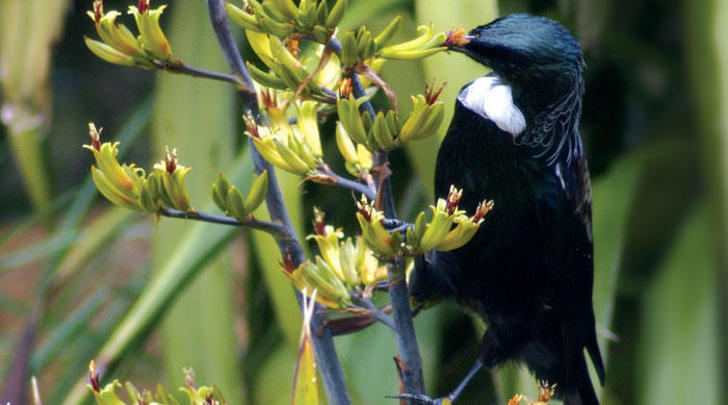Business initiatives
Natural beauty
Greg Roughan - Green Ideas editor

If in doubt, take it out – that’s the philosophy at Living Nature, a 100 per cent Kiwi owned and operated company that’s been making natural cosmetics for quarter of a century.
The mainstream cosmetics industry has a reputation for dragging its feet when questions get raised about the safety of ingredients – but that attitude has no place at Living Nature, says CEO Mike Leyland. If there’s any suggestion an ingredient falls short of Living Nature’s strict rules on safety the Kerikeri-based company won’t touch it.
Mike gives the example of the debate about titanium dioxide that surfaced a few years ago. Living Nature products contain no synthetic chemicals, and titanium dioxide is a naturally occurring white mineral that had previously been used in the company’s sunscreen product. But when fears surfaced over the effects of some forms of the ingredient, “we decided to stop making the sunscreen,” says Mike.
“We copped a lot of flak for that – people really wanted one!”
Fresh thinking
Living Nature has a strong commitment to sustainability which, with its safety-first policy, has meant it has had to get creative over the years.
The company makes a full range of cosmetics, plus skincare products for men and women, shampoos and body lotions – all of which need to be packaged in a way that’s attractive and easy to use for customers.
For many companies that would mean using plastic bottles softened with phthalates, but given the worries over this group of chemicals, that was a big no-no for Living Nature. Instead the company experimented with adding chalk to plastic and found they were able to create packaging that was strong, pliable and – crucially – free of phthalates and BPA (click here for more on BPA).
Other clever tricks in their packaging see most labels printed directly on to bottles with non-toxic vegetable inks, and caps made from the same plastic as the containers, making the whole container a breeze to recycle.
New Zealand’s special plant life
Living Nature has also blazed a trail in the use of New Zealand ingredients as it has looked for natural replacements for the synthetic ingredients it refuses to use. “New Zealand is a little bit like the Amazon,” says Mike. “There are lots of bioactive plants here.”
So in its cleansers and shampoos Living Nature uses the leaves and flowers of the kumerahou plant, also known as ‘gumdigger’s soap’. Kumerahou produces a gentle lather when rubbed and replaces harsher surfactants such as sodium lauryl sulphate.
Native flax or harakeke creates a base for the company’s toning gels: Living Nature claims independent tests show a gel extracted from harakeke is a better moisturiser than aloe vera, and uses the product instead of synthetic petrochemical gels.
Manuka oil gets a look-in too, while kelp extracts are used in shampoos and hand wash products, and an extract from recycled totara bark and wood (no trees are cut down to harvest it) is used for its antioxidant properties.
The safety and sustainability of these ingredients – and the company’s processes – are assessed every year by the German non-profit natural cosmetics certifier BDIH, which also checks the credentials of brands such as Dr Hauschka.
Image counts
With all this reliance on ingredients unique to New Zealand it’s no surprise Living Nature sees our country’s 100% Pure brand as crucial to its success.
The company splits its sales 50-50 between New Zealand and overseas and the products are marketed in 18 countries – with a heavy emphasis on our green image and unique plant life.
Mike says this image is critical in selling their brand, and compares this approach to one of our big exporters – the meat industry. Historically, says Mike, meat has concentrated on being a high-volume industry that competes on price, which leaves it fighting with the biggest players in the world.
The wine industry, on the other hand, has managed to create a story for itself out of New Zealand’s unique environment, and is sold as a high quality, high-value niche product. That’s the route Kiwi exporters need to take, Mike says, but it means the country needs to walk the talk when it comes to the environment – instead of just taking an airbrush approach to our waterways, conservation and climate change policies.
“In New Zealand we’ve got the opportunity to stick to high end, effective, natural products marketed to global standards. We’re clever, creative, innovative – all that good stuff.
“But we need to be careful or we run the risk of tarnishing our reputation.”
Choosing safe cosmetics
Living Nature CEO Mike Leyland says the best way to choose safe cosmetics is to do your own research, rather than trusting industry claims.
"There are some good resources out there. The Environmental Working Group [a private, not-for-profit advocacy group based in the US] have set up what they call the Skin Deep Database. It's all about safe cosmetics."
The Skin Deep Database lists more than 76,000 beauty products, breaking them down by ingredients, and includes links to credible research on controversial ingredients such as phthalates and sodium laurel sulphate. Visit www.ewg.org/skindeep.
Handy link
www.livingnature.com
